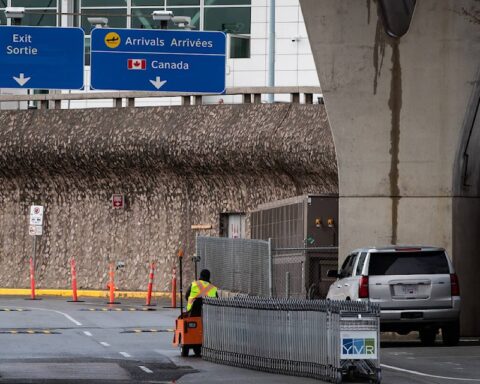Although voter turnout is expected to be low in the upcoming Ontario election, experts say votes from the immigrant community are expected to remain vitally important, with the ability to influence the outcome in several swing ridings in the Greater Toronto Area.
Analysts believe that because of limited knowledge, it’s easier for voters to determine the differences between political parties rather than considering the merits of a multitude of individual candidates. They say it’s no different for immigrant voters, too.
Ontario attracts the largest number of immigrants in Canada, receiving 49.1 per cent of the nation’s immigrants in the first 10 months of 2021.
Immigration, Refugees and Citizenship Canada statistics show that Ontario welcomed 154,005 new immigrants.
Immigrant voters are vital
“They’re politically important,” says Randy Besco, an assistant professor in political science at the University of Toronto, who specializes in elections, voting, immigration, race and ethnicity.
Immigrant voters are vital, in some cases in determining which party holds the balance of power, especially in the Greater Toronto Area where swing ridings often change hands.
“These immigrant communities' vote can often decide the election," Besco says. “I think that's something that immigrants should realize.”
The GTA holds more than 50 of Ontario’s 124 legislative seats, with a majority of them being swing ridings. Voting decisions are generally made along party lines and not on the strengths of the local candidate.
While local candidates do matter, individual candidates are generally less of a factor in deciding which way to vote than the party, leader, economic policies and so forth.
According to research published in the Canadian Journal of Political Science, local candidates are a decisive consideration for only about five per cent of voters.
“That’s why we often see voter turnout much, much lower at the municipal level, because in most situations, there aren't parties," says Dennis Pilon, an associate professor of politics at York University.
“And that makes it challenging for voters to figure out what all these individual politicians stand for.”
“It’s a fantasy idea,” Pilon explains, to expect voters who research politics to read policy briefs, or check on politicians' individual backgrounds and voting records.
“That is not realistic. Historically, voters have always used a sense of affinity with particular political parties to figure out what to do in an election. And for the most part, that's good enough.”
Swing ridings and low voter turnout
Low voter turnout is generally the norm, but the 2018 Ontario elections saw a 20-year high when 58 per cent of eligible voters cast a ballot.
However, voter turnout across Canada declined by eight per cent in the 2021 federal election, and a similar pattern is expected in provincial elections.
Furthermore, Western University political science professor Laura Stephenson doesn't see a “ton of enthusiasm for this election.”
“People are pretty exhausted with politics right now,” Stephenson says.
“[Although all elections are] pretty important, we may see a drop in turnout simply because people are tired of going to the polls at this point.”
James Simeon, head of York University’s McLaughlin College school of public policy and administration, says that people are drawn to particular candidates and their particular parties.
Simeon suggests local campaigns should identify supporters and undecided and then “try to persuade the undecided voters to vote for your candidate.”
“This is where the local campaigns, I think, become important.”
Affinity voting
Besides the four mainstream provincial political parties, there are 21 minor parties and 41 independent candidates competing in the June 2, 2022 Ontario election. Yet if an independent candidate is successful in winning a seat, Pilon says it is almost invariably someone who was once a member of a major political party.
“The only people who do succeed as individuals running without a party are always members who are formally part of a party,” Pilon says.
Meanwhile, Besco said in his research that while voters believe “the attributes of leaders are an important factor in voter choice,” they are also influenced by affinity voting.
“[V]oters support candidates who are like themselves — be it their region, language, or gender.”
___________________________________
Additional data reporting provided by Rachel Morgan.
Tazeen is based in Mississauga and is a reporter with the New Canadian Media. Back in Pakistan where she comes from, she was a senior producer and editorial head in reputable news channels. She holds a master’s degree in Media and Communication and a certificate in TV program production from Radio Netherlands Training Center. She is also the recipient of NCM's Top Story of 2022 award for her story a "A victim of torture, blogger continues fight for human rights in Pakistan"





